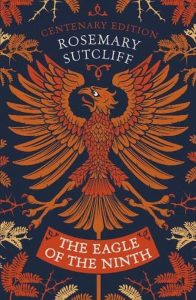Imagine the scene. I was a second year student at Bishop Otter College Chichester, training to be a teacher. The staff had announced an outside speaker day and the whole of my year was gathered to hear Ian Seraillier (of The Silver Sword fame), Brian Wildsmith (painter who illustrated stunning books for young children) and Rosemary Sutcliff who wrote historical novels. It was important for us to steep ourselves in children’s literature, our tutors told us. They were right, of course. And actually this was one of the best and most memorable days of my three years’, generally rather lacklustre, teacher training.
Rosemary Sutcliff taught me a massive lesson that day which had not a lot do with her books. Please forgive me for what follows but remember I was only 19 and I had led a pretty sheltered life. Sutcliff had been affected by the acutely disabling Still’s disease since infancy. It is a form of juvenile rheumatoid arthritis, thought to be the result of an immune disorder. It meant that her tiny body and face shape was unusual and she used a wheelchair. She made her visit to our college accompanied by an assistant. At that point she was the most severely disabled person I had ever seen – so I was horrified. Then came the aforementioned lesson. Sutcliff talked with charismatic fluency and at length about her work and I realised that an impaired body does not – definitely does not – mean an impaired mind. In fact in her case it had indirectly informed her work because interrupted and inadequate schooling meant that she spent a lot of time with her mother who told her the myths, legends and stories which later underpinned many of her novels. I left that room with a completely new understanding of disability.
The Eagle of the Ninth was published in 1954, the first in a trilogy, and probably remains the most famous of her books. I read it at the time of that special day in college and at least once since when I was trying to coax students to read it by sharing extracts with them.
It tells the story of Marcus, a military commander in Roman-occupied Britain in the second century AD. Injury means the loss of his career but, haunted by the story of his father’s disappearance with the Ninth Legion he sets off on quest north of Hadrian’s wall to discover the truth. Sutcliff’s starting points were the ongoing mystery of the Ninth Legion’s disappearance and the Roman Eagle in Reading Museum which was excavated nearby. She hooks the two things together by imagining that the found Eagle belonged to the Ninth Legion and so, of course, Marcus – amidst lots of danger and tension – has to find it and bring it back to Calleva – Silchester, a village near Reading.
Rereading this gripping novel after many years, I’m struck by various things. First there’s the extraordinary power of Sutcliff’s imagination. Her characters are so realistic and plausible that you could reach out and touch them. She humanises Roman culture completely whether it’s Aquila, Marcus’s uncle hiding kindliness under assumed brusqueness, the velvety coat and friendly muzzle of the wolf cub Marcus obtains and tames or Cottia, the girl next door who becomes important to him.
Second, her prose is evocatively colourful but precise without ever being over done: “Faintly into the silence, down the soft wet wind, stole the long-drawn haunting notes of the trumpets from the transit camp sounding for the third watch of the night” or “The dark heather streaked backward under his pony’s thudding hooves, the long harsh hairs of its mane sprayed back over his wrists, and the wind sang past his ears”.

Third the friendship between Marcus and Esca is beautifully done. Esca – a warrior from a British tribe – comes to Marcus as a bought slave. Gradually they relax with each other and become friends. Marcus formally gives Esca his freedom so that they are equals and Esca stays with Marcus from choice. If this novel had been written 50 years later it would probably have been a different sort of relationship. As it is, it is simply old fashioned respect, comradeship and liking between two men.
Fourth I love the way she racks up the excitement. I think of her (she died aged 71 in 1992) sitting more or less immobile in her wheelchair imagining all this. And I’m humbled.
Next week on Susan’s Bookshelves: The Godwulf Manuscript by Robert B Parker